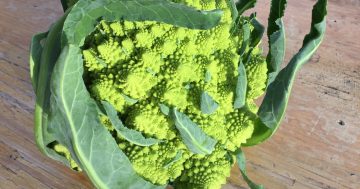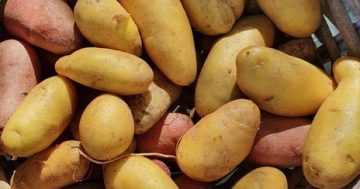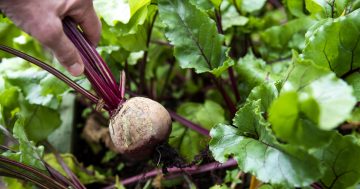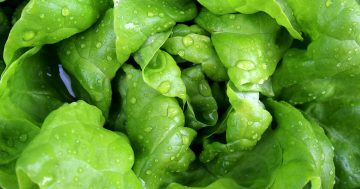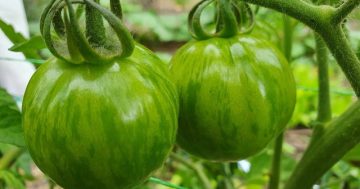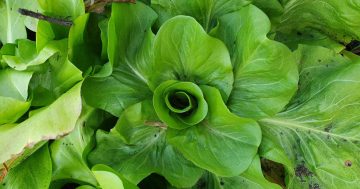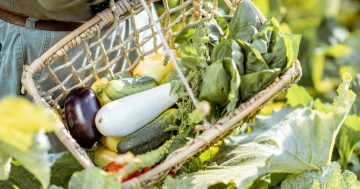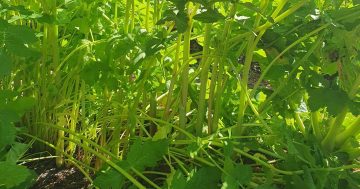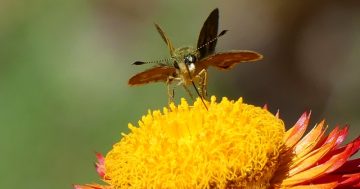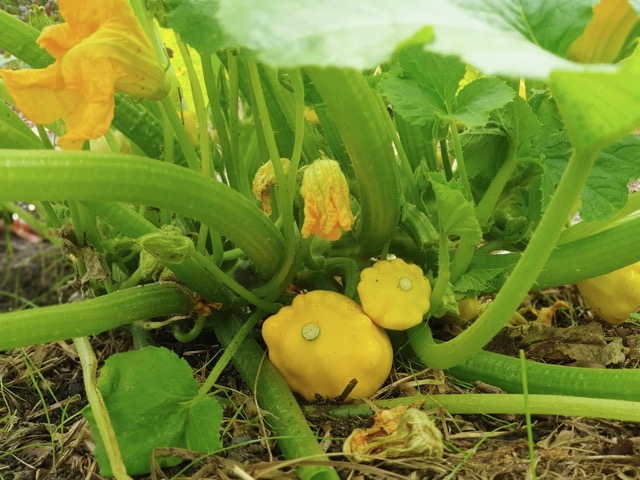
Button squash are still cropping well as autumn approaches. Photo: Helen Lynch.
It is remarkable to observe the vegetable garden at the end of one season and the beginning of the next.
In our cool/cold climate region, where the seasons make themselves known with falling leaves and cooler mornings, the vegetables stand a little straighter and look lush and soft. However, in this time of changing and variable weather, it is hard to be sure exactly what season we are supposed to be in. The best the BoM can come up with is that we’re likely to experience warmer than average day and nighttime temperatures through Autumn and less rainfall.
A delay in frosts could be very beneficial to our gardens, but who knows what will happen?
This is a great time to be planting for food from the garden through winter and into early spring. The soil is still warm, which makes germination of root crops very easy. Try carrots, parsnips, turnips and swedes.
So what is the difference between a turnip and a swede, which are both Brassica family members?
Swede is a turnip originating in Sweden (but you probably guessed that!) They are bigger, tougher-skinned, yellow-fleshed, and hardier than turnips, and they cope well in very cold winter conditions. Swedes also tend to be sweeter than turnips.
Turnips have smoother skin and white flesh and grow well in temperate climates. They have a mild taste with a hint of peppery spice, sweetness and cabbage. The taste of both turnip and swede can intensify with age, and the texture becomes woody.
Both grow well across Australia’s cool and cold climate regions, the sweetness intensified by frost. They’re great winter soup and stew vegetables!
In this changing weather, plant every couple of weeks or at least monthly. This increases the likelihood of vegetable success.
Quickly changing weather conditions or an extreme weather event can impact plant growth, and a range of vegetables at different stages gives you the best chance of producing a successful crop.
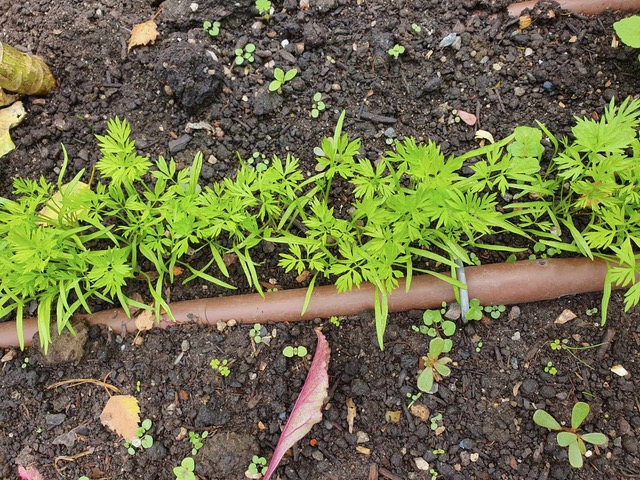
Carrot seedlings germinate while the weather remains warm. Photo: Helen Lynch
Seedlings are particularly useful to plant at this time of year as they give the best chance of good growth. The Brassica family is diverse, versatile and hardy, and this month is ideal for planting a range from this wonderful group.
Broccoli and broccolini, kohlrabi, cabbage and cauliflower are a must, all very filling, nutritionally dense vegetables and winter garden staples.
Get a tray of seedlings and plant two or three of each every few weeks. Plant in the ground, in spare pots and in flower beds with plenty of sunny spots.
Make some space for leafy green family members, including kale and collard greens, and Asian green members, including kai-lan, pak choy, mustard greens, and land cress (if you can’t find seedlings, try seeds if planting this month).
Other interesting crops are corn salad, also known as lamb’s lettuce or mache, and miner’s lettuce or winter pulse, quick-growing radish, and daikon.
Again, plant frequently to stagger reproduction and survive weird weather events. When these events occur, the plants are at different stages of maturity. Top up your plantings with beetroot and silverbeet seedlings, spring onion and leek seedlings, and, of course, garlic.
Planting lots of vegetables from the Brassica family can invite a host of chewing and sucking insects, including aphids, white flies, and white cabbage butterflies, although these will retreat as the weather cools.
Mitigate the risk of plague by planting beneficial flowering plants and attracting beneficial insects.
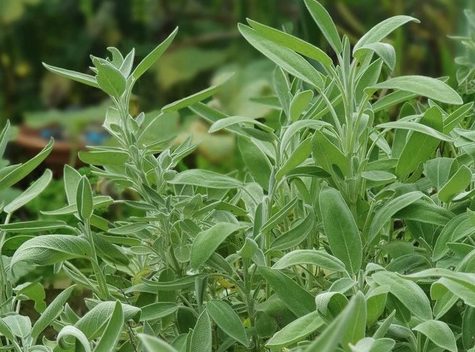
Sage plants and other herbs attract beneficial insects. Photo: Helen Lynch
Hoverfly, green lacewings, lady beetles, parasitic wasps, and praying mantis are good predators. Herbs such as thyme, spearmint, parsley, dill, lavender, rosemary and lemon balm, and flowers like alyssum, cosmos, cornflowers and marigolds are attractants for good bugs and some act as insect repellents.
Next, try organic pest controls and pest traps. Insecticidal soap is incredibly useful for removing pest insects, including aphids and white fly.
Cabbage butterflies and cabbage moth caterpillars are a little more difficult. Removing the caterpillars by hand, spraying with Neem oil, or using a biological spray containing Bacillus thuringiensis is a naturally occurring bacteria (Nature’s Way produces one).
Many pests are less attracted to red and purple vegetables. Studies have shown that anthocyanin, the antioxidant-rich flavonoid that makes red, purple, and blue-pigmented veggies so good for us, is actually mildly toxic to caterpillars and possibly many other pests. So try planting red cabbages.
Lastly, heavy storm activity with heavy rain can leech important minerals from the soil. Remember to fertilise regularly with a seaweed or fish emulsion-based fertiliser. If your location is experiencing very wet weather, you can improve soil nutrients by using compost as a mulch or spreading a complete organic pelleted fertiliser.
Bronwyn Richards and Helen Lynch run Wynlen House Artisan Village Farm and Learning Centre, a small village organic market garden in Braidwood, NSW. Since 2006 they have grown and sold fresh vegetables, eggs, preserves and garlic, and teach others to do the same.
Original Article published by Helen Lynch on Riotact.







